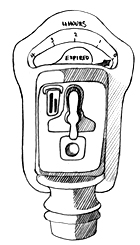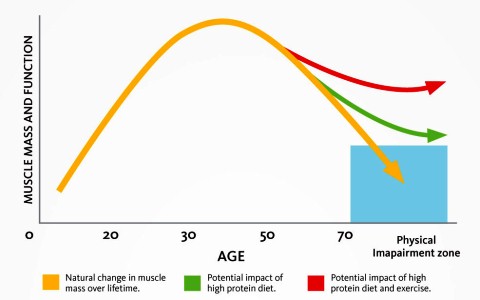You will know that protein is vitally important for preserving muscle as you age. But what are the top choices, how much should you aim for and what’s the perfect way to time things right?
Protein Essentials
Protein is made up of a long chain of smaller building blocks, called amino acids. When we eat protein, our body breaks it down into these amino acids and sends them off around the body to fulfill a variety of functions.
There are over 20 types of amino acids that we know of. Different foods contain different types of amino acids. And our bodies can actually make most of them itself. The ‘essential’ amino acids are the ones that our bodies can’t make, and these have to be sourced from our diet. Only a few foods contain all of these nine essential amino acids.
There are 20 amino acids in protein.
Three of these ‘essential’ amino acids, often called Branch Chain Amino Acids, are particularly important for muscle maintenance. So we not only need to choose proteins that have the nine essential amino acids, we also need to choose those that have high concentrations of the three amino acids most important to muscles.
Nine amino acids are essential to source from food.
Foods that contain all of the nine essential amino acids are often called ‘complete’ proteins and one of the most readily available sources is dairy foods. Adding dairy protein to your day boosts the availability of branch chain amino acids to help your muscles stay stronger for longer. Generally, proteins derived from animal foods (meats, fish, poultry, cheese, eggs, yoghurt, and milk) are complete and proteins derived from plant foods (legumes, grains, and vegetables) tend to have less of one or more essential amino acid. Some are notably low, such as corn protein, which is low in lysine and tryptophan.
Three amino acids are most important for muscles.
Not Just What But WHEN
 Most of us already eat enough protein in a day to meet the recommended daily intakes, but studies have shown that we get the bulk of our protein intake at night with our evening meal. Sound familiar? However, new research indicates that as we age, our bodies need more regular intakes of protein to maintain strong muscles.
Most of us already eat enough protein in a day to meet the recommended daily intakes, but studies have shown that we get the bulk of our protein intake at night with our evening meal. Sound familiar? However, new research indicates that as we age, our bodies need more regular intakes of protein to maintain strong muscles.
Think of your body as a parking meter that needs a dose of high quality protein to run for four hours. With full credit, your meter happily ticks away, building and repairing muscles. But if you want to stay in the ‘zone’ it needs topping up again before the credit expires. So by spreading protein intake throughout the day, we allow our body to make better use of the branch chain amino acids to build and repair our muscles.
Right on Time
So the focus for most of us should be spacing our intake of high-quality protein throughout the day. And the first step for many will be new ways of boosting protein into the earlier part of our day. We should wake up to more protein at breakfast and top up at lunch, dinner and snacks.
Making change takes time and effort, so you need to know that it’s going to be worth it. Fortunately, you don’t have to take our word for it – you can share your own experiences and learn how others have discovered benefits like increased strength, better mobility and sustained energy here on GrownUps.
By Emma Stirling APD










PrancingJean - 12 years ago
How much quanitiy of protein? What type of cheeses are recommended?